Panama Trip
November 16-28, 2007
![]()
Day 1, Friday November 16, 2007
Day
2, Saturday, November 17, 2007
Day
3, Sunday, November 18, 2007
Day
4, Monday, November 19, 2007
Day
5, Tuesday, November 20, 2007
Day
6, Wednesday, November 21, 2007
Day
7, Thursday, November 22, 2007
Day
8, Friday, November 23, 2007
Day
9, Saturday, November 24, 2007
Day
10, Sunday, November 25, 2007
Day
11, Monday, November 26, 2007
Day 12, Tuesday, November 27, 2007
Day
13, Wednesday, November 28, 2007
![]()
Day 12, Tuesday, November 27, 2007
We left early again this morning, heading southwest of El Valle for the Pacific
lowlands and "dry" forest near El Chiru, an area that has been little
explored by birders. Of course it was raining lightly when we arrived, but it
soon stopped. The group that came here yesterday had sunny weather, but for us
it was cloudy. Good thing, because it was plenty hot without the sun! As
expected, among the common birds were more Groove-billed Anis.
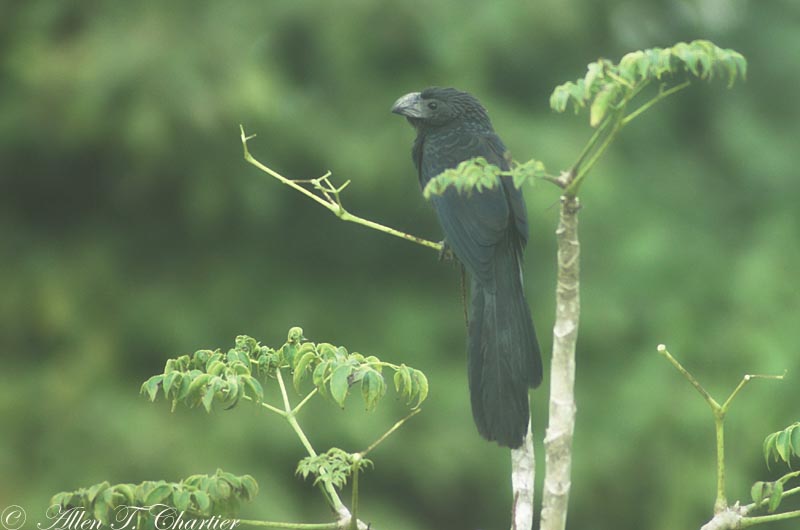
There were no hummingbird feeders in the area, but we had several Sapphire-throated Hummingbirds. Only this one female was cooperative enough for photos.
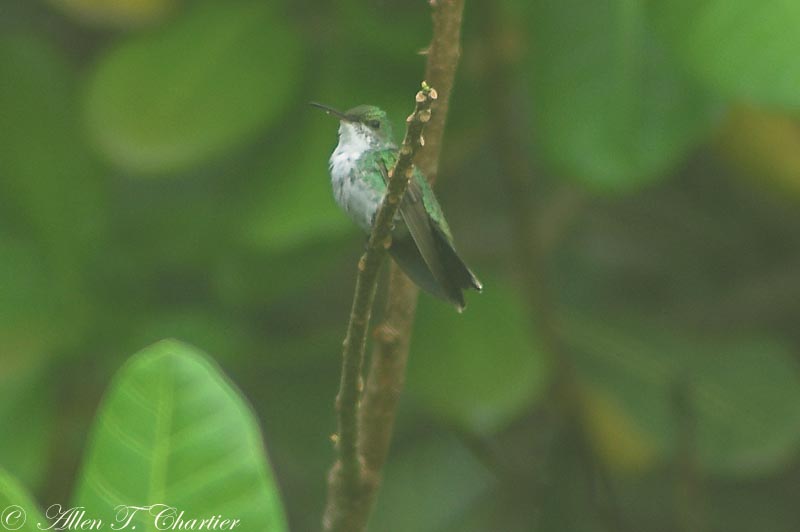
Perched right next to the road at one point was a nice Lesser Yellow-headed Vulture. An old name for this species is Savanna Vulture, which makes a lot of sense although I've also seen them in large marshy areas.
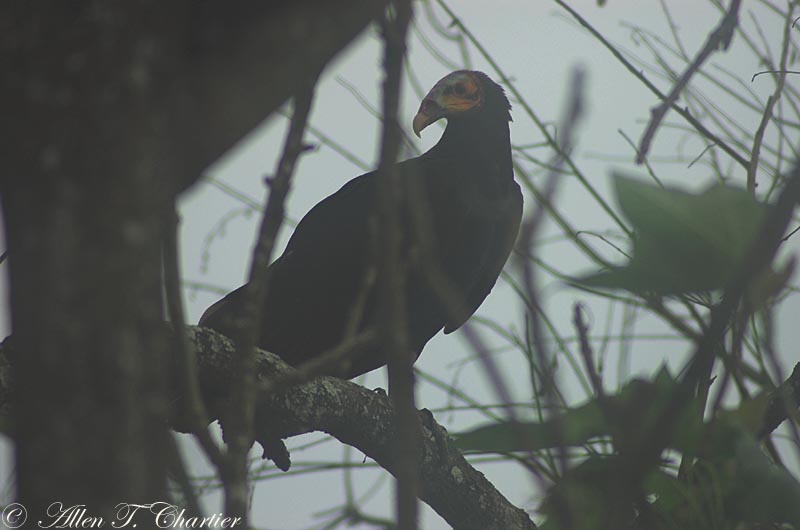
In an open field we saw and heard the resident subspecies of Eastern Meadowlark. This bird sounds at least as different as Eastern and Western Meadowlarks do from each other, so maybe someday it will be split? I will be posting my recording of this song onto the Xeno-canto website in the coming weeks. A Streaked Flyatcher flew into a large dense tree at one point, carrying food, and it quickly came back into view without the food. We did not locate the nest.

We birded a Eucalyptus plantation for a while and got good looks at Brown-throated Parakeets, and worked an adjacent hedgerow and cane field for quite some time before getting good looks at two shy and skulky Crested Bobwhites. We also had a good look at a Panama Flycatcher here before moving along to our next destination. We returned to the Pan American Highway and started down a long, long, bumpy, potholed road toward the Pacific coast and Playa Juan Hombron. At one point, Tino spotted a hummingbird perched in a tree. It turned out to be a Panamanian endemic, a Veraguan Mango! This was the last (of 7) of the world's mangos I had left to see, and it was also my 11th life bird of the trip, my 185th (of 339) hummingbird and my 3700th life bird!

This species was formerly lumped with Green-breasted Mango but as the photo
above clearly shows it lacks any black on the underparts. Luckily, this was one
time when a photo taken through Tino's scope came out well (it was difficult to
do without my photo adapter). The Veraguan Mango had been seen at this locale
several times, which represents an eastward range expansion from what is
currently known, but this photo is the first solid proof of its occurrence
there.
We finally arrived at the beach at Playa Juan Hombron, where we stayed and had
lunch. Far offshore there were a couple of fishing trawlers that had hundreds of
Magnificent Frigatebirds following behind. Try as I might, I could not spot any
boobies or other unusual pelagic species. There were some shorebirds on the
beach, like these two at opposite ends of the size scale.

The Sanderlings were nervous and flighty, while the Whimbrels seemed quite unconcerned and allowed close approach.
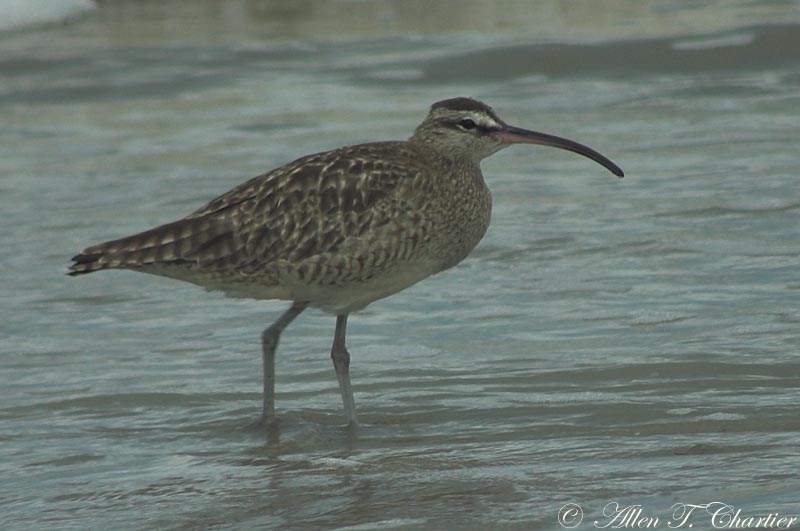
A group of Willets spent most of the time sleeping and it wasn't easy getting a photo of an active one.
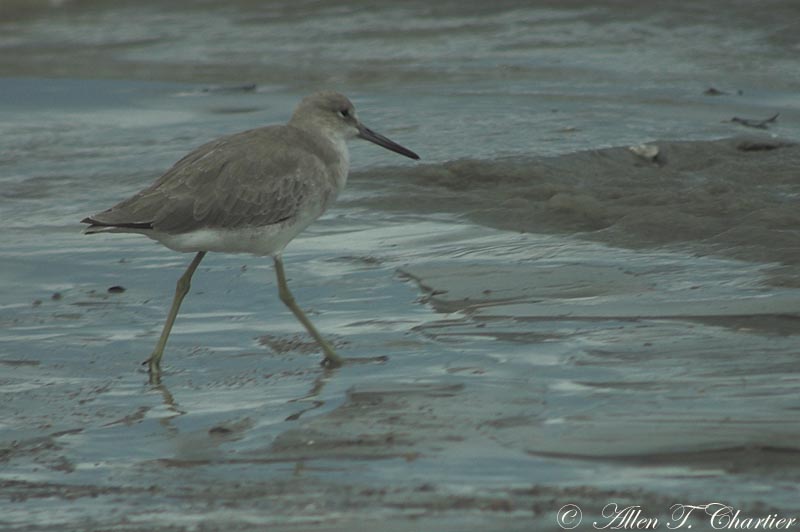
One of the Whimbrels wandered between a couple of Willets, allowing me to get a photo I like to call a WWW photo (Willet/Whimbrel/Willet)! Or, perhaps this could be called a Whimbrel Sandwich!
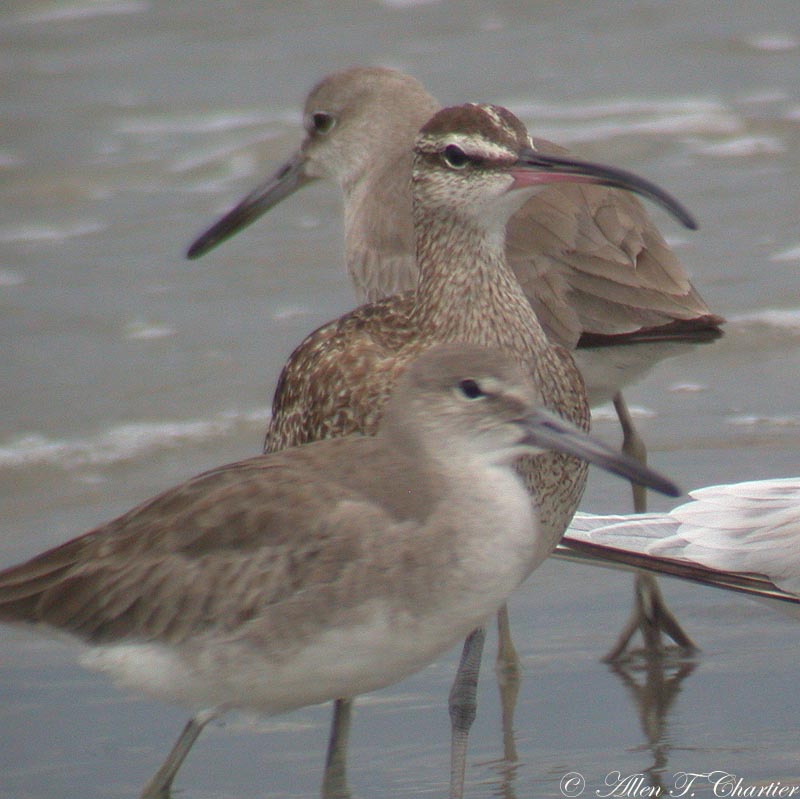
And speaking of Sandwich, it was the terns that held our attention the most as we noted five species here, including of course, Sandwich Terns.
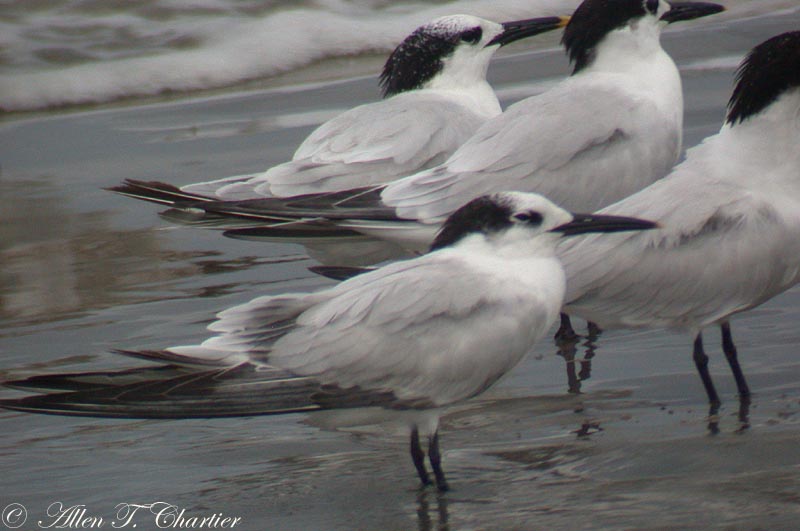
Several Gull-billed Terns were seen flying offshore, and were a life bird for Tino. But none of them landed on the beach, and the few Common Terns flying out over the Pacific did not approach us either. The expected large, orange-billed tern here is, surprisingly for the Pacific coast, the Royal Tern. Oddly, we saw only one Royal Tern on the beach, here with a Laughing Gull and sleeping Willet. Ther were, perhaps, a couple more flying far out over the water.

We had plenty of discussion about all the other orange-billed terns on the beach, and flying out over the water. They just didn't look right to us for Royal Terns. The bills looked too thin and curved, and the eye was not set off on the face, and many of them had shaggy black crests.

As we got closer, and had better views, it became clear that ALL the other orange-billed terns on the beach were in fact Elegant Terns.

There were at least 15 of them on the beach, and perhaps just as many flying offshore. It was interesting to see the color variations in the bill. Field guides often state that the bills of Elegant Terns are more yellow than those of Royal Terns. But this photo shows two pretty different bill colors on birds that show bill shapes and head patterns that are clearly Elegant Terns. Obviously there's a bit of variation, and bill color should not be considered a reliable field mark.
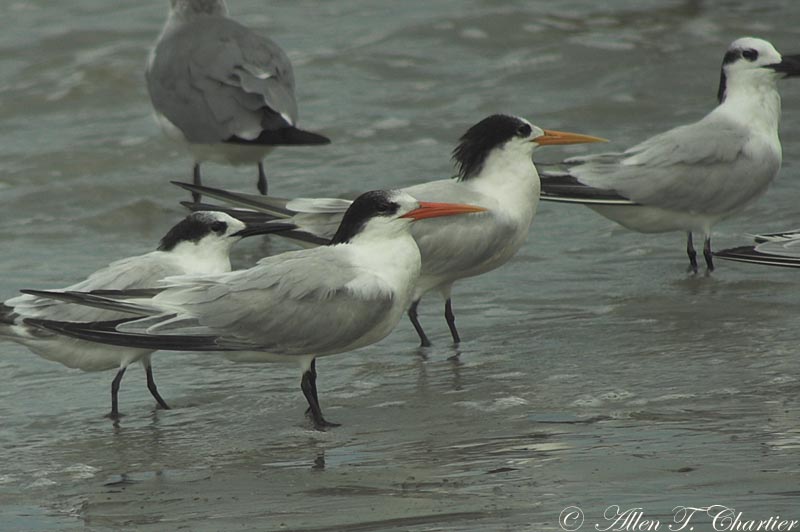
Elegant Terns are rather uncommon anywhere in Panama, as their migration route along the Pacific takes them from their west Mexican (and SW U.S.) breeding grounds to their South American wintering grounds by a more direct pelagic route. Panama's Pacific coast runs east-west here so it is not exactly on the flight line. Our group of 20-30 Elegant Terns is probably one of the largest ever recorded in Panama.
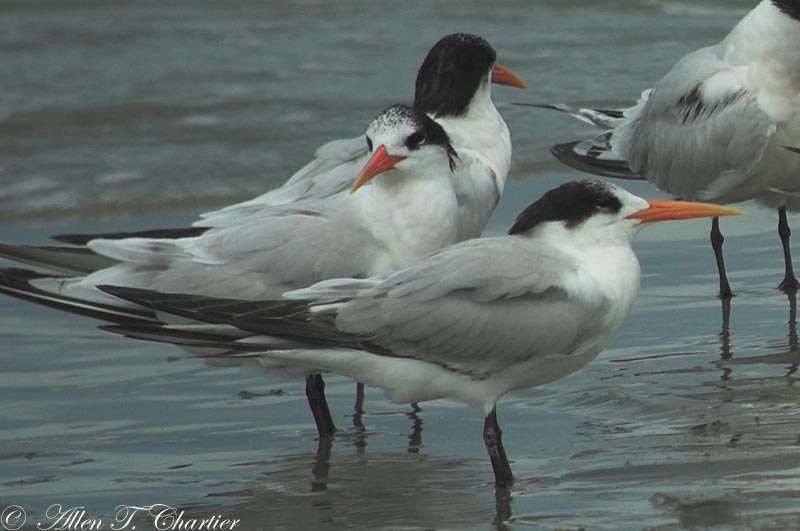
In fact, it is possible that Elegant Tern may have been photographed in Panama very few times, if ever. Juvenile Elegant Terns have red legs, and rarely an individual will retain this color long after it leaves the nest. One such bird was among those on the beach here. As the bird opens its wings to preen, it is quite evident it is retaining some juvenal plumage.
Click here to view a video of a red-legged Elegant Tern.After lunch we explored a freshwater marsh that was perhaps 100 yards from the ocean. We found quite a few Ruddy Ground-Doves here, and had good looks at Rufous-browed Peppershrikes and a pair of Northern Scrub-Flycatcher. Two Black-crowned Night-Herons were roosting in a small hammock of trees, and an unusual find was a female Common Yellowthroat.
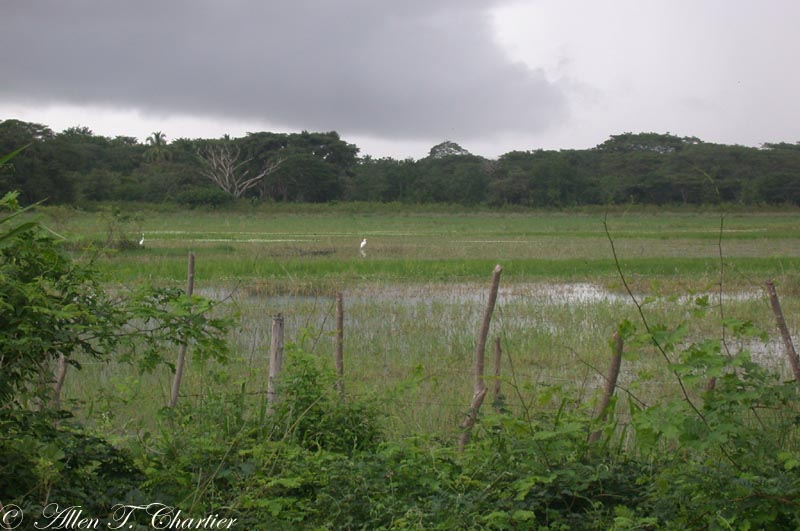
The rain started again, of course, so we started heading back for the Canopy Lodge. Although we had been here a few days, this early afternoon trip back up toward El Valle was the first good opportunity to photograph the scenery on the way. Our driver was very accommodating, but stayed safe.
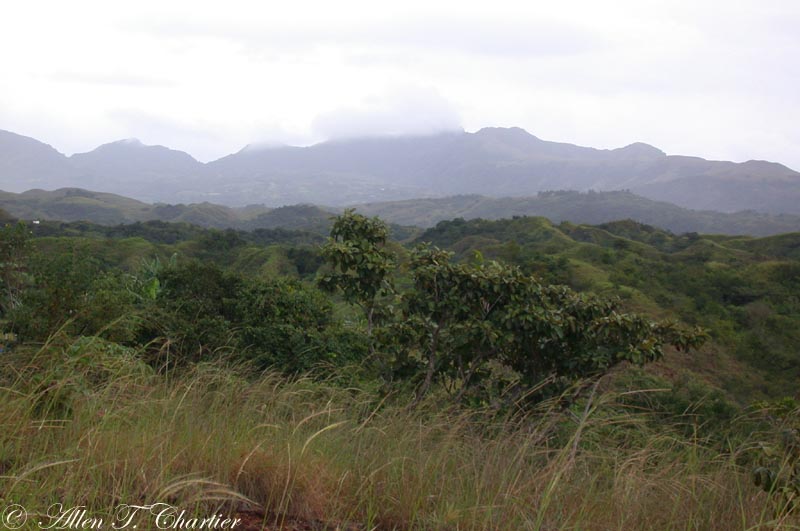
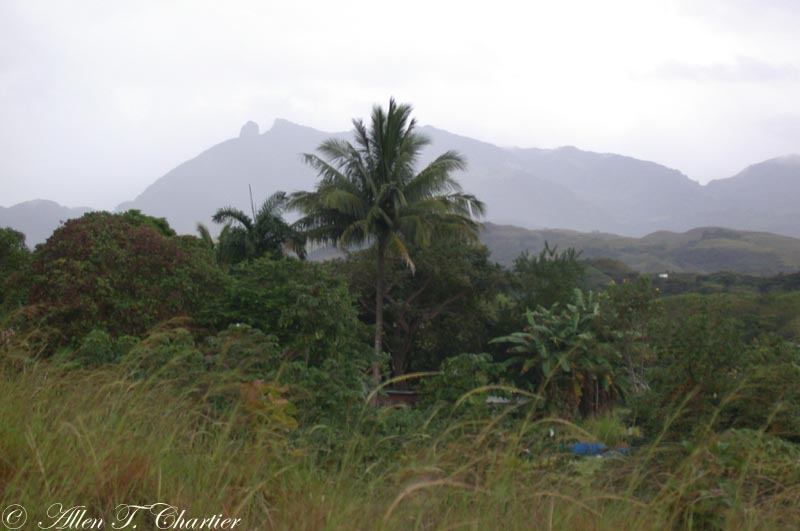
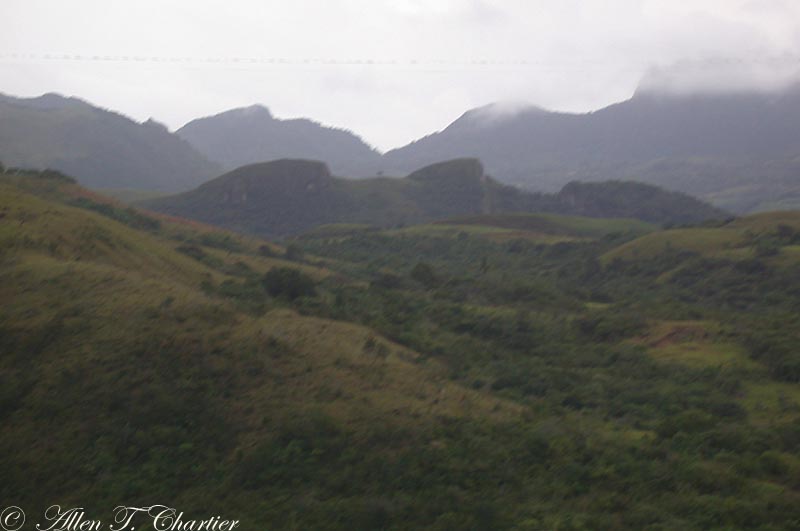
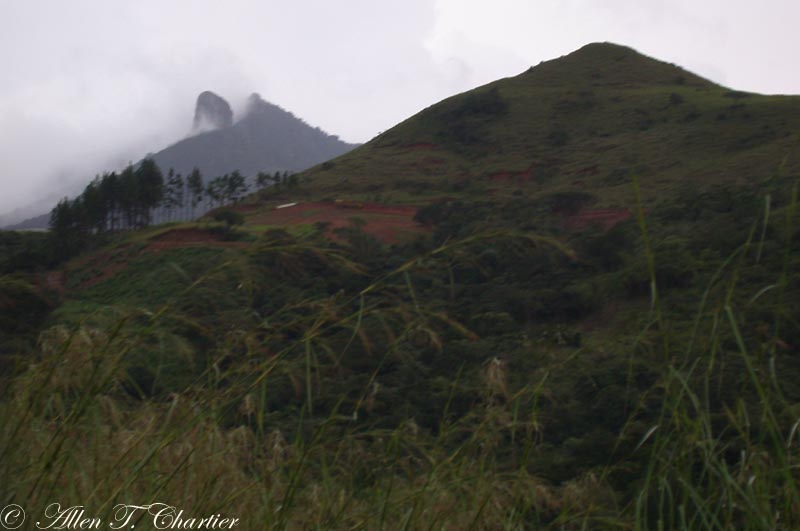
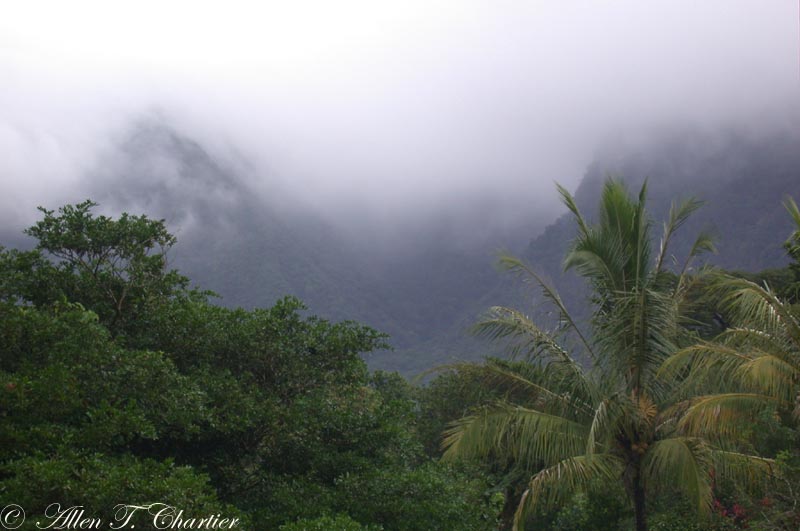
We arrived back at the Canopy Lodge in the early afternoon. I spent some time working the feeders, trying to get some last minute photos before we left Panama tomorrow. One great challenge was getting a photo of the numerous Clay-colored Robins OFF the feeder. I finally succeeded.
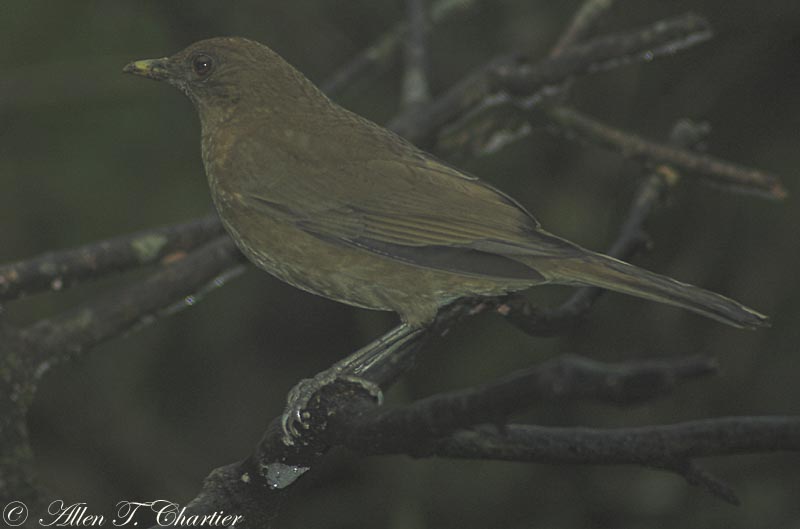
Just the opposite, this Black-striped Sparrow was almost never seen on the feeders.
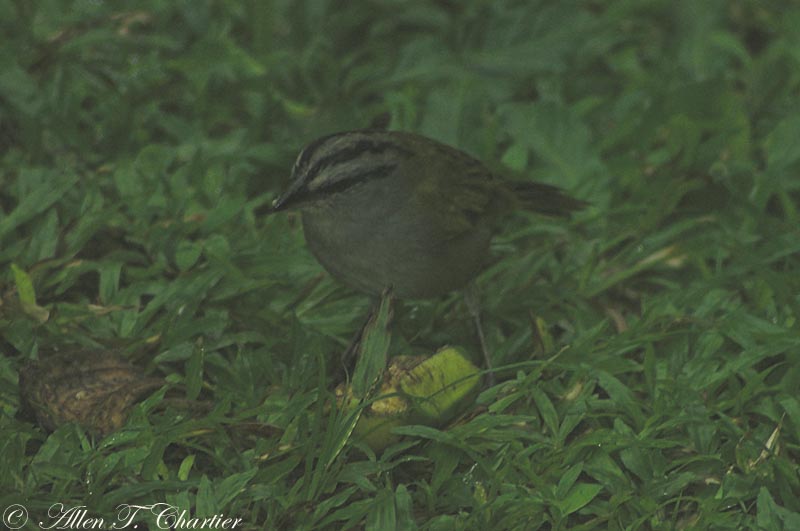
And there were many more female Thick-billed Euphonias around than males.
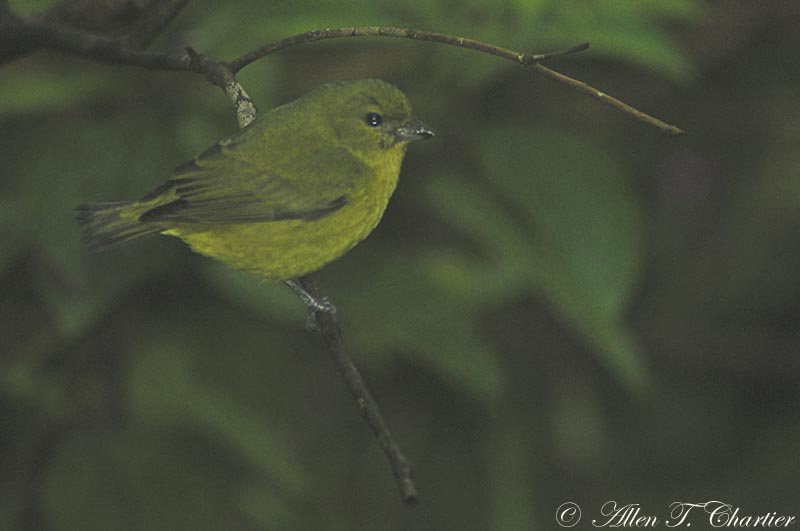
The Blue-gray Tanagers continued to be numerous.
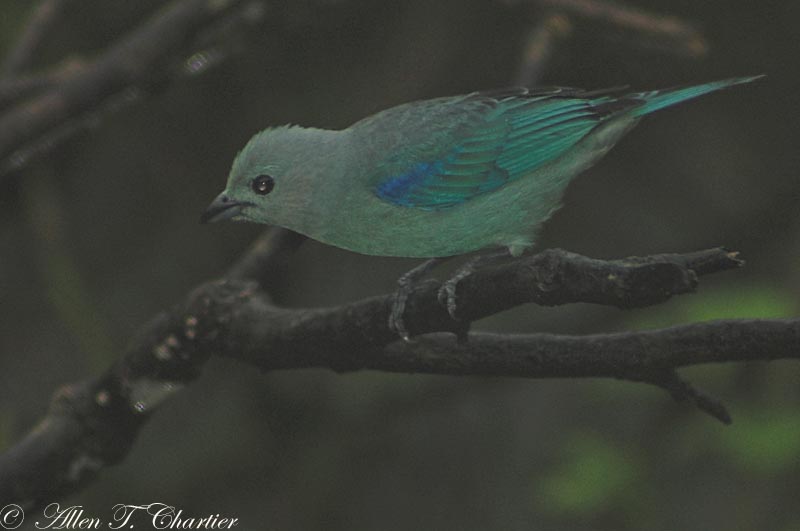
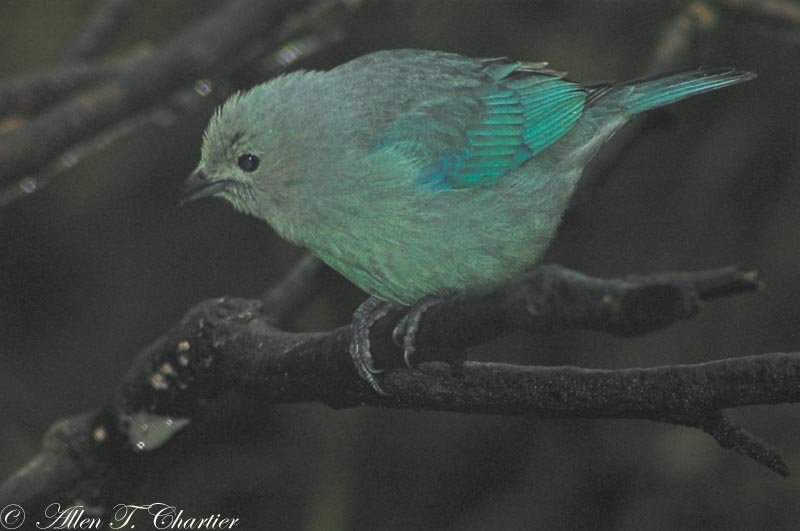
The Crimson-backed Tanagers were a little more challenging as the light wasn't great, and they didn't come in very often.
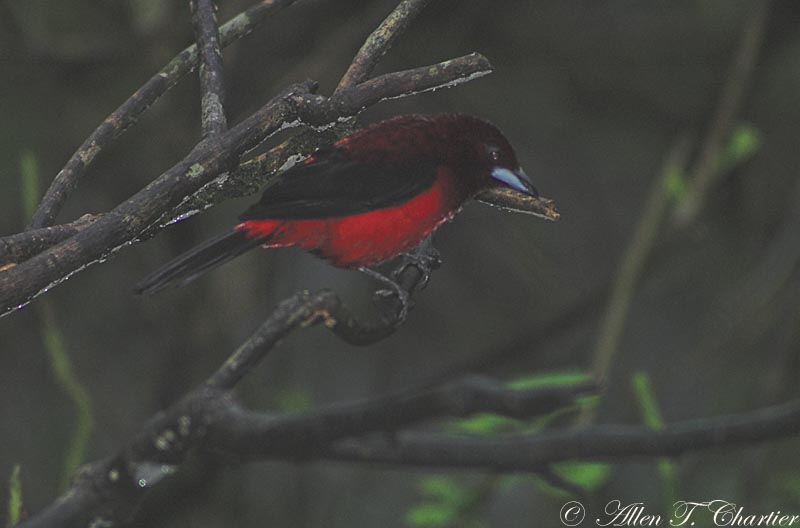

The Flame-rumped Tanagers were even more difficult, and I never managed a photo of one of the spectacular males, only this slightly blurry shot of a female.

On my way back to the hummingbird feeders, this small lizard (probably Norops polylepis) gave me a chance for a quick photo.
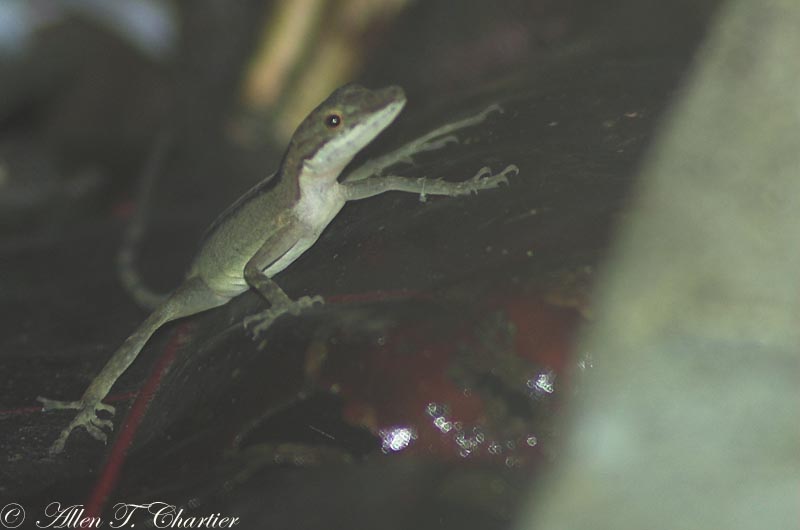
There were two hummingbird feeders in a sort of central court of the lodge, which was very dimly lit, and which provided easy access to the woods behind the buildings. I found that Rufous-tailed Hummingbirds liked to come to the feeders here in addition to going to the flowers along the river.
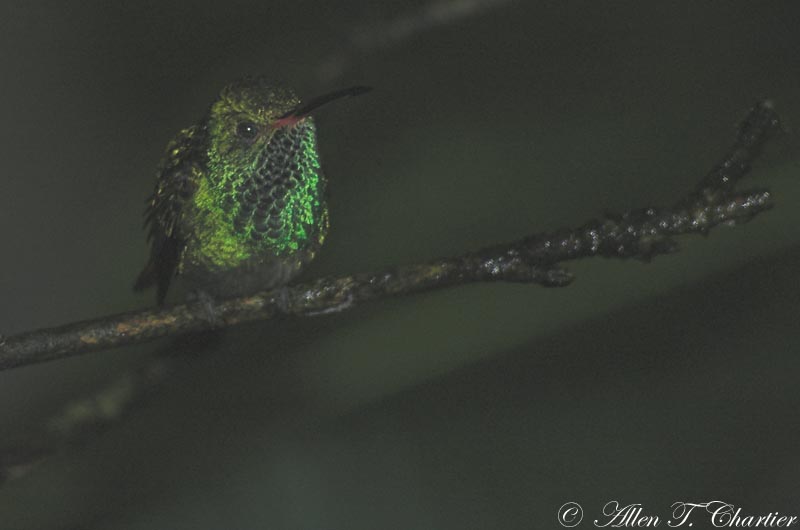
These shady feeders seemed to be the main place where the Violet-crowned Woodnymphs were hanging out, and was the only place I saw a female.
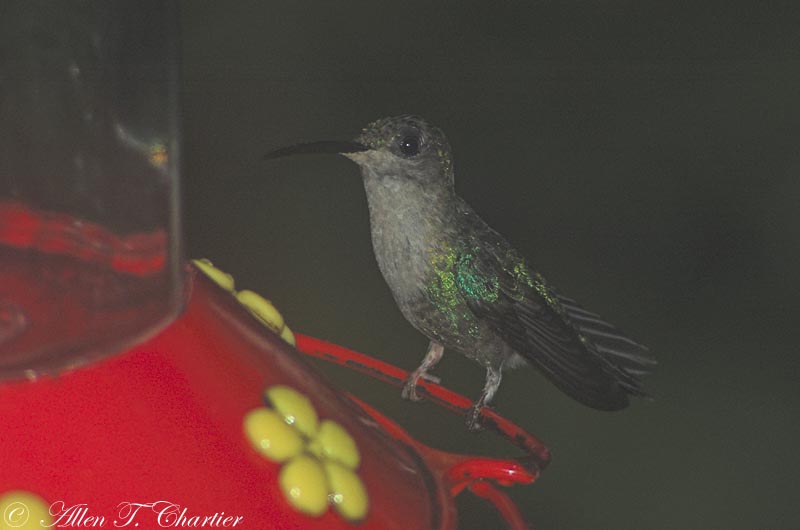
It seems odd to me that the males, bright green and purple birds, spend so much time in the shade where they look all dark.
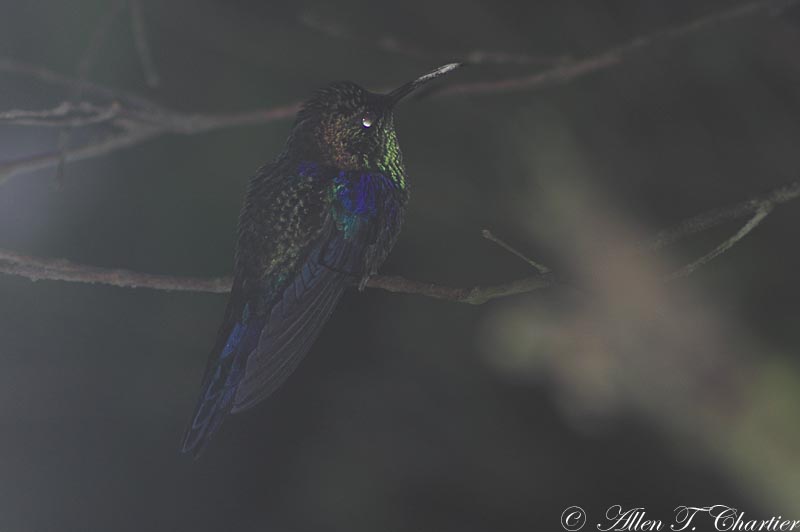
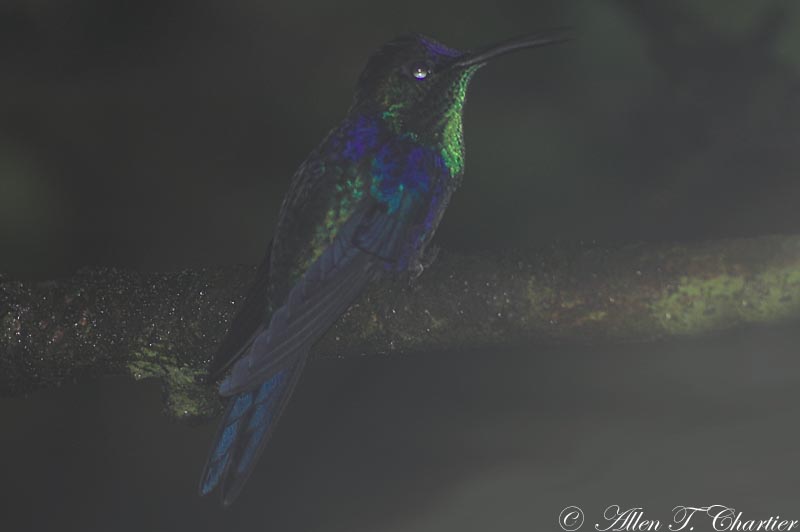
Then we decided to walk back up to Chorro el Macho to look for the day-roosting owl that we'd missed twice so far. On the way, we saw this Spotted Woodcreeper down quite low. Although the light is poor I've included the photo here just because it is difficult to photograph any woodcreeper in any light.
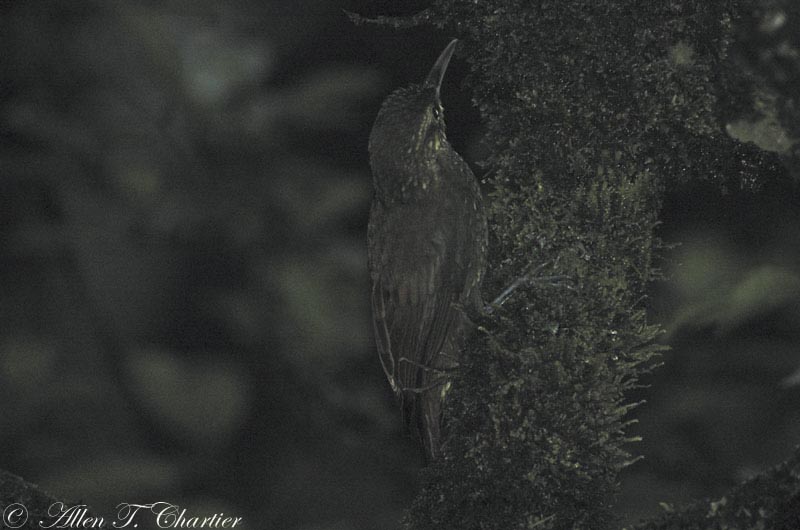
When we got to the dimly lit tangle where the owl had been seen, it was in residence this time. A very nice Mottled Owl. It was a great "last bird" for the trip.
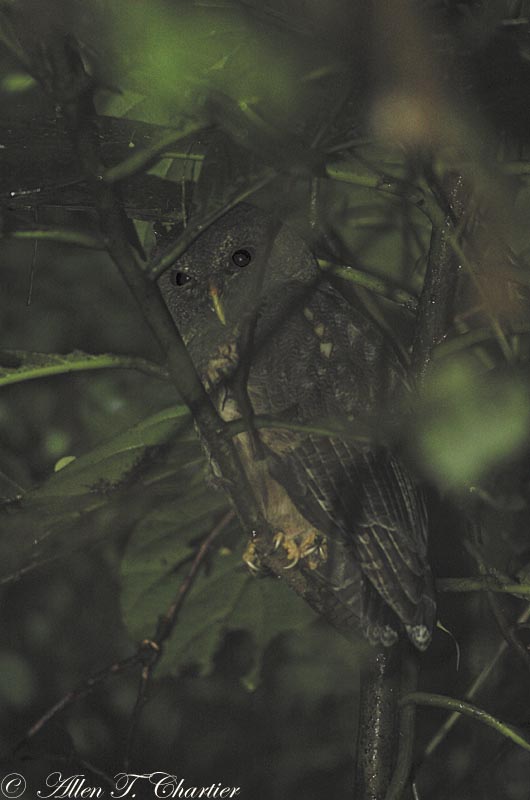
The last hummingbird seen for the trip was a male Violet-headed working the Verbena at sunset at the Canopy Lodge. 119 species for the day, 346 for the trip.
![]()